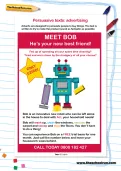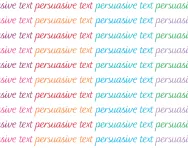TheSchoolRun.com closure date
As we informed you a few months ago, TheSchoolRun has had to make the difficult decision to close due to financial pressures and the company has now ceased trading. We had hoped to keep our content available through a partnership with another educational provider, but this provider has since withdrawn from the agreement.
As a result, we now have to permanently close TheSchoolRun.com. However, to give subscribers time to download any content they’d like to keep, we will keep the website open until 31st July 2025. After this date, the site will be taken down and there will be no further access to any resources. We strongly encourage you to download and save any resources you think you may want to use in the future.
In particular, we suggest downloading:
- Learning packs
- All the worksheets from the 11+ programme, if you are following this with your child
- Complete Learning Journey programmes (the packs below include all 40 worksheets for each programme)
You should already have received 16 primary school eBooks (worth £108.84) to download and keep. If you haven’t received these, please contact us at [email protected] before 31st July 2025, and we will send them to you.
We are very sorry that there is no way to continue offering access to resources and sincerely apologise for the inconvenience caused.
Persuasive texts: advertising
What is persuasive text?
A persuasive text is a piece of writing that aims to convince the reader to adopt a particular viewpoint or take a specific action. The writer uses reasons and examples to explain why they think you should agree with them. It could be in a story, a speech, an advertisement or even a letter. People use persuasive writing in things like ads, speeches and when they want to make a point about something important.
What are some examples of persuasive text or writing?
Here are five examples of persuasive texts or writing:
- Advertisements: commercials and print advertisements in magazines or newspapers often try to persuade people to buy a product or service by highlighting its benefits and appealing to emotions.
- Political speeches: politicians use speeches to persuade voters to support them or their policies by presenting their ideas, values, and plans for the future.
- Debates: participants argue for or against a particular topic, trying to persuade the listener with their arguments and evidence.
- Product reviews: reviews on websites or in magazines aim to persuade people to buy or avoid certain products by providing information and opinions about their quality and performance.
- Petitions: online or paper petitions gather signatures to advocate for a particular cause or action, aiming to persuade policymakers or organisations to make a change.
How will this Year 5 persuasive text activity help your child at home?
This fun and colourful worksheet was created by an experienced educator with the purpose of helping your child learn how to identify common elements in persuasive text. Your child will need to examine the example of an advertisement and find all of the listed features in the text, such as rhetorical questions and exclamation marks.
For more help with Year 5 English, check out our hub page, or discover another challenge for your child, such as Persuasive writing: film reviews.






